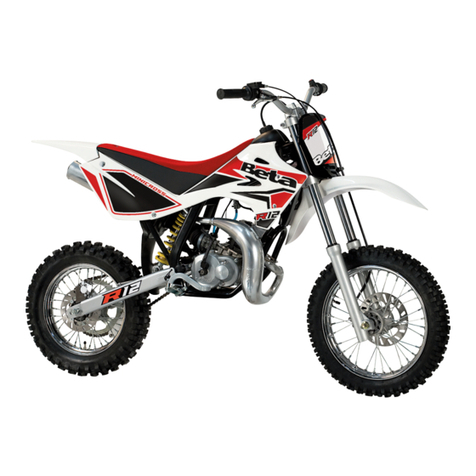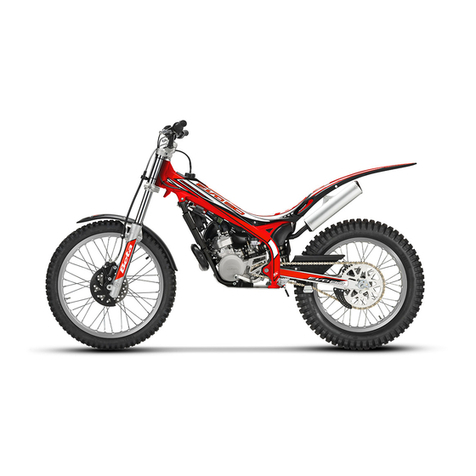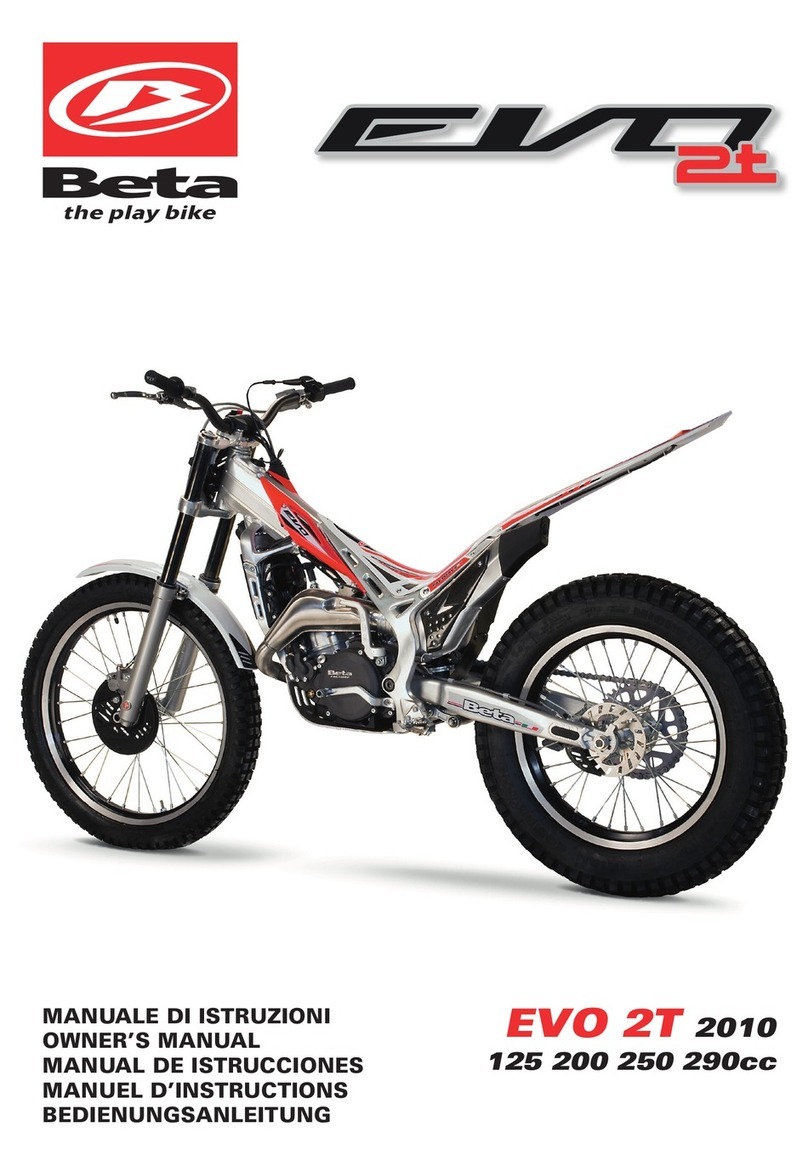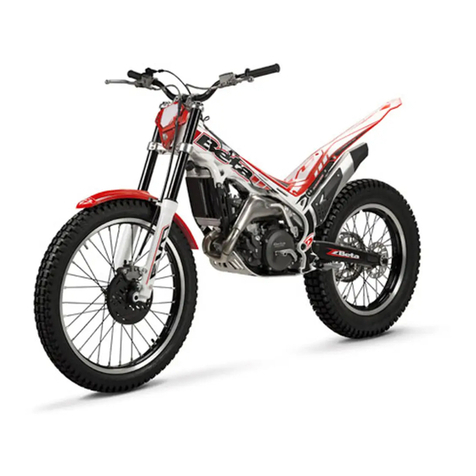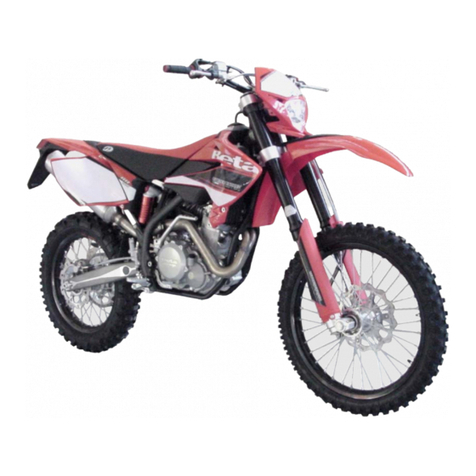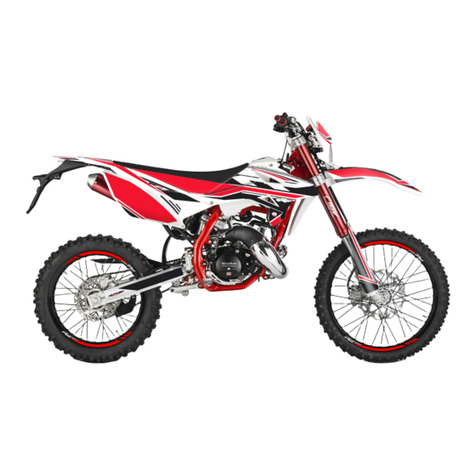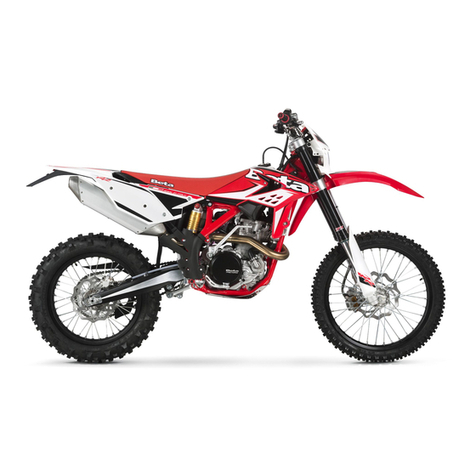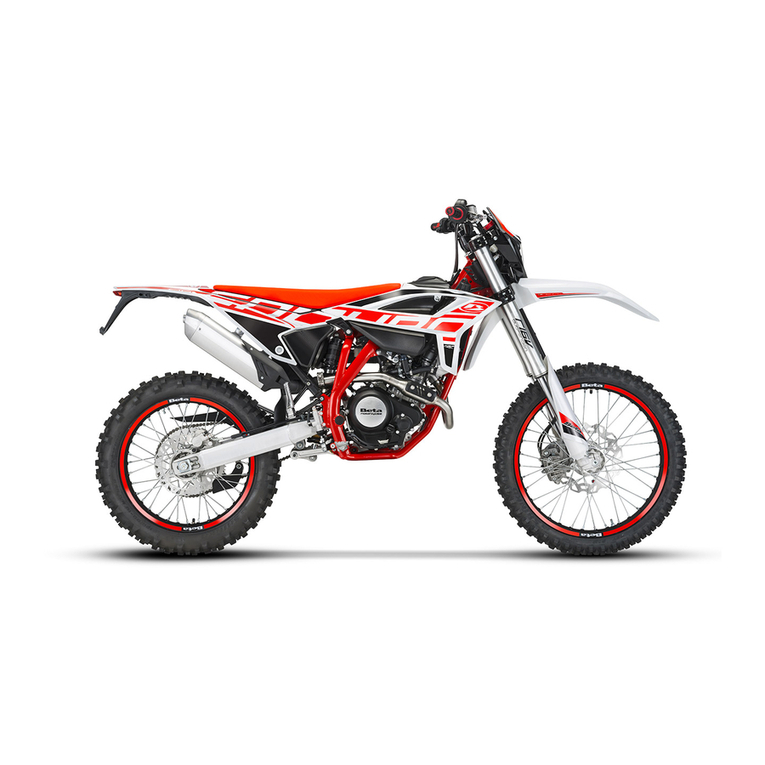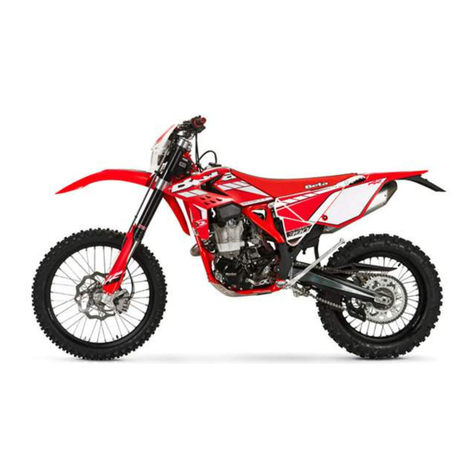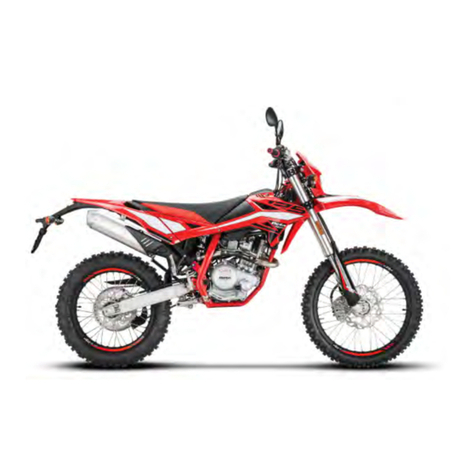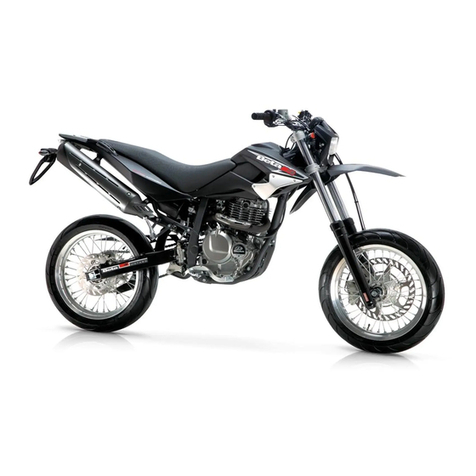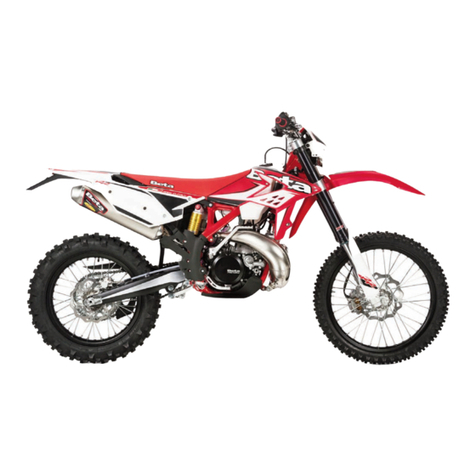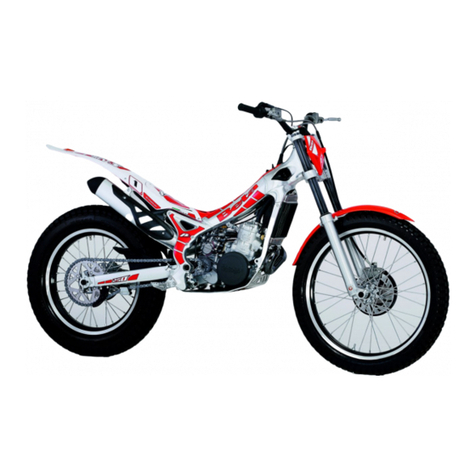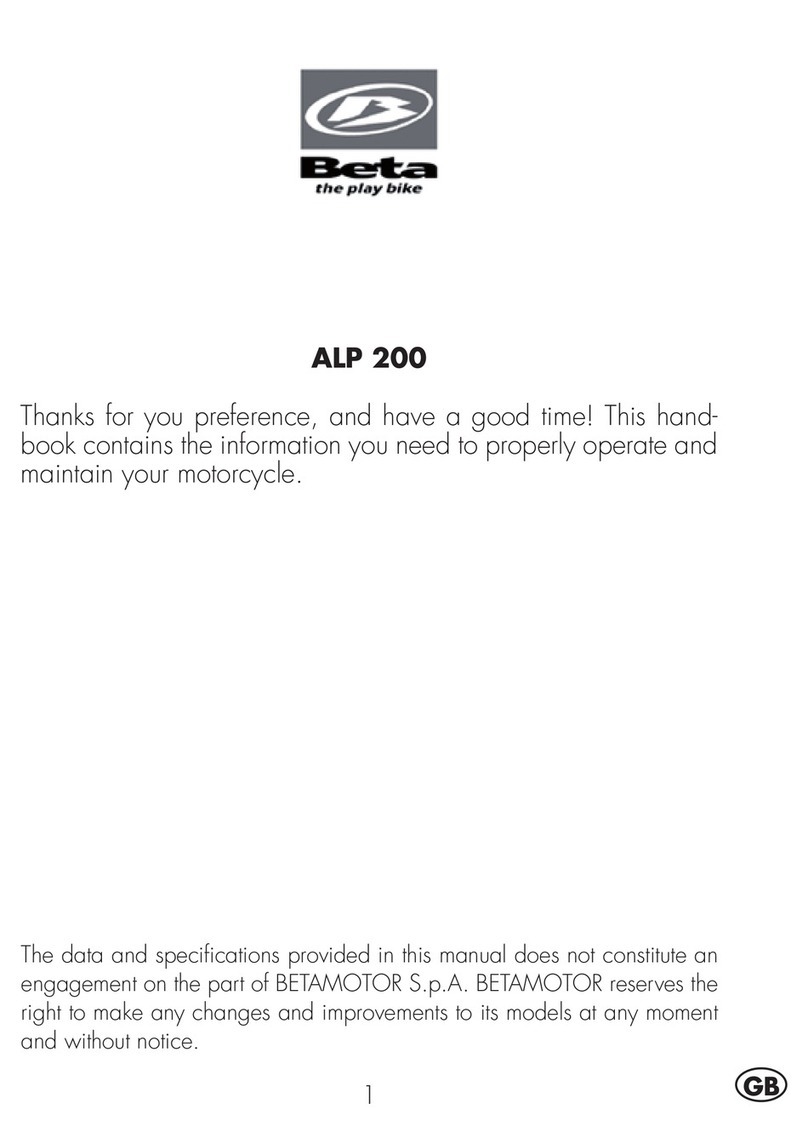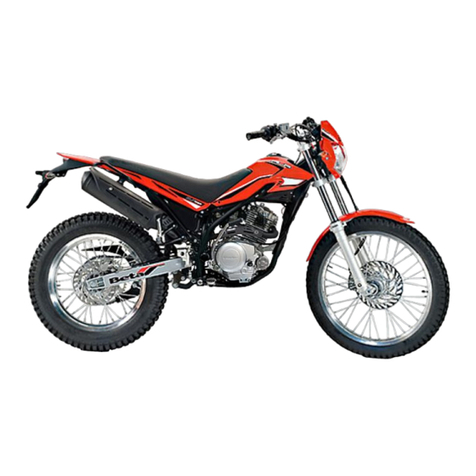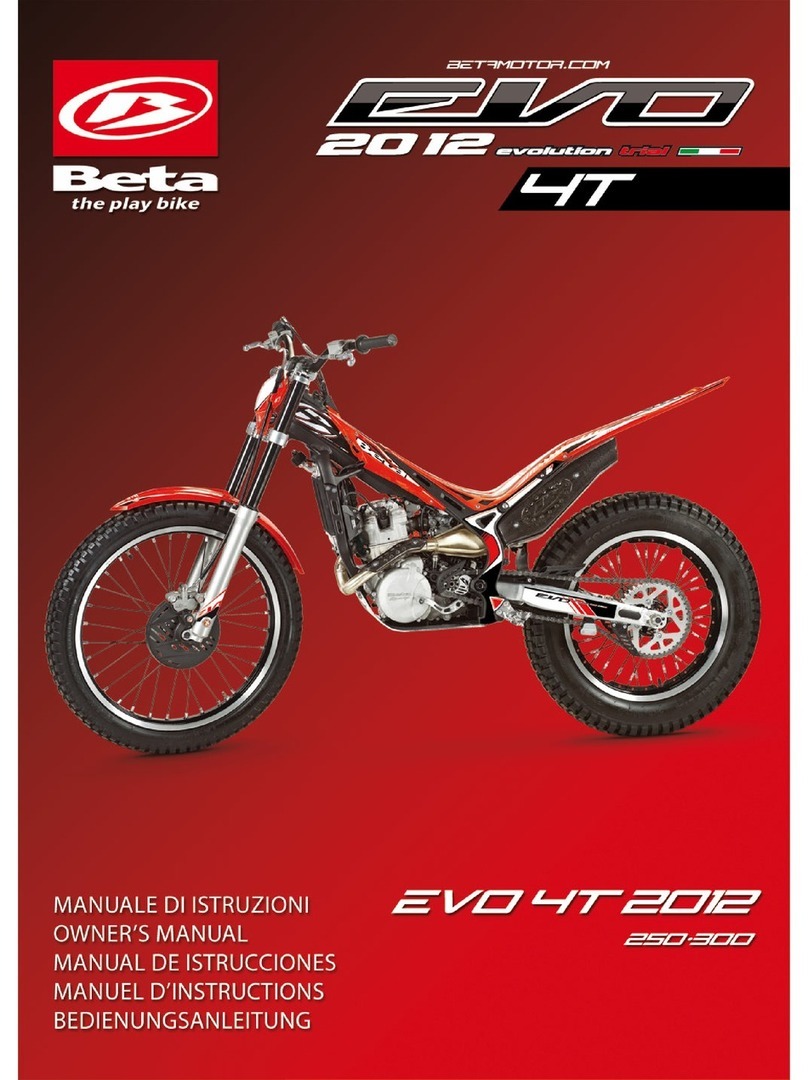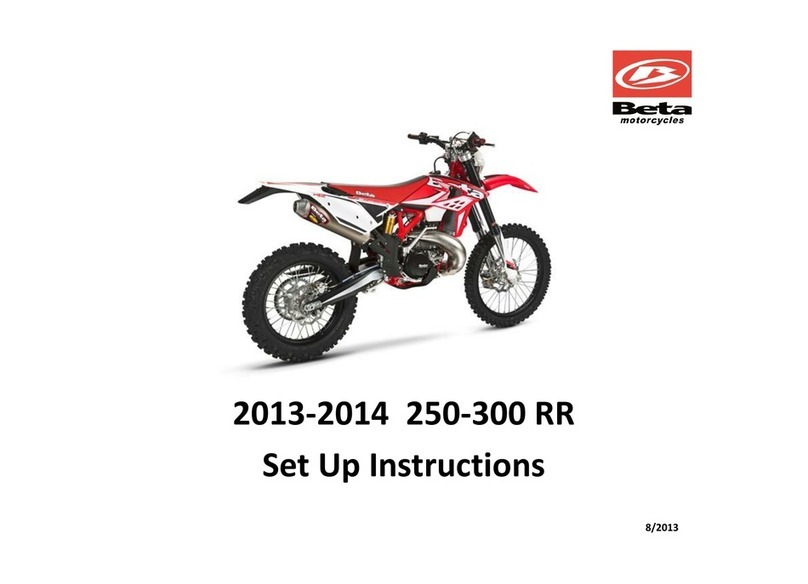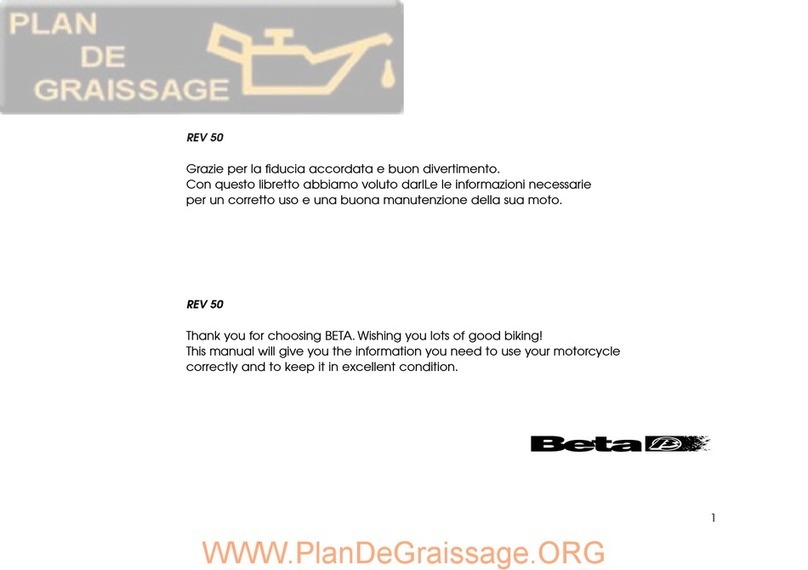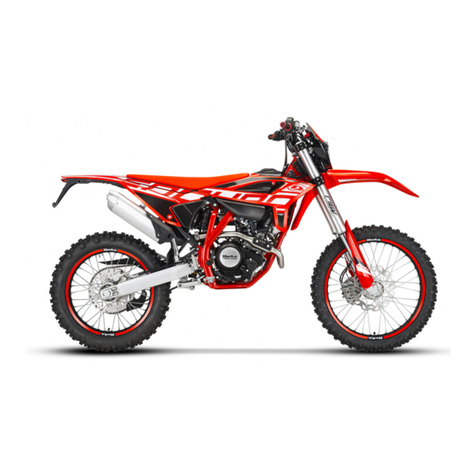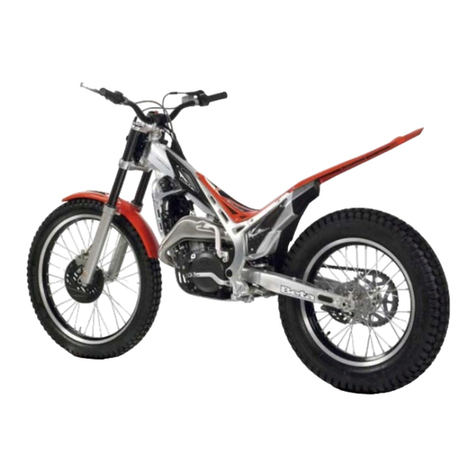CONTENTS
3GB
Operating instructions.............................................................................. 5
Ecologic guide....................................................................................... 5
Riding safety.......................................................................................... 6
CHAPTER 1 GENERAL INFORMATION.............................................. 7
Vehicle identification data ........................................................................ 8
Delivery................................................................................................ 8
Load ................................................................................................. 10
Tyres .................................................................................................. 10
Steering lock ....................................................................................... 11
Familiarizing with your vehicle ................................................................ 12
Controls.............................................................................................. 13
Specifications ...................................................................................... 23
Wiring diagrams RR 4t ......................................................................... 27
Electrical devices.................................................................................. 29
Euro 3 devices..................................................................................... 30
CHAPTER 2 OPERATION ................................................................. 31
Checks to be performed before each ride ................................................. 32
Lubricants............................................................................................ 33
Running-in ........................................................................................... 33
Starting the engine................................................................................ 34
Choke and Idling setting........................................................................ 35
Refuelling............................................................................................ 36
CHAPTER 3 CHECKS AND MAINTENANCE..................................... 37
Motor oil level check............................................................................. 38
Changing the engine oil and filters extraction............................................. 39
Changing the gear and clutch oil ............................................................ 41
Check the level of the front and rear brake fluid and bleeding....................... 42
Check the front and rear brake pads........................................................ 44
Check the oil level in the hydraulic clutch and bleeding ............................... 45
Fork oil............................................................................................... 46
Air filter .............................................................................................. 49
Spark plug .......................................................................................... 50
Carburetor .......................................................................................... 52
Coolant.............................................................................................. 54
Drive chain maintenance and wear.......................................................... 55
Charging the battery............................................................................. 56
Cleaning and checking the vehicle .......................................................... 57
Scheduled maintenance......................................................................... 58
Prolonged inactivity............................................................................... 60
